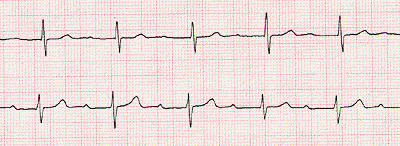Medical Pharmacology Chapter 6: Autonomic Pharmacology: Cholinergic Drugs
Primary current therapeutic rationale:
Sedation
Antisialagogue
Historical: IM atropine was used prior to anesthesia induction to limit excessive salivary secretion and reduce vagal reflex influence on the heart
Current inhaled/injected anesthetic agents are not consistently associated with these effects
Anticholinergic drugs are not mandatory as part of preoperative medication
Gastrointestinal effects:
Usual anticholinergic drug doses for preoperative medication (and adults) does not affect either gastric volume or pH
Special considerations:
Patients with glaucoma:
Mydriatic effects of scopolamine > atropine; caution with scopolamine use in patients with glaucoma
Atropine + anticholinesterase causes little/no change in pupil size, therefore appearing apparently safe
Glycopyrrolate (Robinul): least effect on pupil size of all anticholinergic drugs used in preoperative medication
Parturients:
Atropine and scopolamine both cross the placenta, although the fetal heart rate is not significantly changed following atropine or glycopyrrolate IV administration.
Scopolamine is preferred when sedation is the objective for including anticholinergic drug in preoperative medication
Atropine:
Less sedation compared to scopolamine
Associated with increased incidence of memory deficit associated with anesthesia, compared to glycopyrrolate
Delayed arousal in the first 30 minutes after anesthesia if atropine-neostigmine mixtures were used to antagonize nondepolarizing neuromuscular-blocking drug effects {compared to glycopyrrolate-neostigmine mixtures}
Scopolamine enhances significantly sedative effects of other drugs administered at the same time, i.e. benzodiazepines and opioids
Scopolamine plus morphine: reliable preanesthetic sedation
Glycopyrrolate (Robinul): does not readily cross the blood-brain barrier; no sedative effects
CNS effects of anticholinergic drugs -- particularly scopolamine:
Restlessness or somnolence
Such symptoms more likely to occur in the elderly
Inhaled anesthetics may potentiate anticholinergic CNS drug effects®increased postoperative restlessness/somnolence incidence
Treatment of Reflex-Mediated Bradycardia
Anticholinergic drugs: drugs of choice for management of intraoperative bradycardia --especially if due to increased vagal tone
 |
|
P Wave |
PR Interval |
QRS (sec.) |
Characteristics |
|
Before each QRS (identical) |
> 0.20 |
< 0.12 |
Regular |
Marquette Medical Systems, Inc
|
|
|
P Wave |
PR Interval |
QRS (sec.) |
Characteristics |
|
Conduction Intermittent |
Increasingly Prolonged |
< 0.12 |
QRS dropped in a repeating pattern |
Marquette Medical Systems, Inc
Third Degree (Complete) Block
Atropine increases heart rate (by blocking acetylcholine effects on the SA node)
Young adults are most sensitive to atropine effects on heart rate {higher vagal tone} compared to infants or elderly patients
In the elderly: atropine may have no effect on heart rate
During anesthesia with a volatile agent, atropine dosage required to raise the heart rate may be less than that required in an awake patient -- suggesting vagal center depression during anesthesia
|
|
|
P Wave |
PR Interval |
QRS (sec.) |
Characteristics |
|
Normal but not related to QRS |
none |
N/A |
No relationship between P & QRS complex |
Marquette Medical Systems, Inc (http://www.mei.com)
Halothane (Fluothane) (like opioids) probably increases central vagal tone, explaining why atropine administration is more likely to result in an increase in heart rate compared to patients anesthetize with enflurane (Ethrane)
Taylor, P. Agents Acting at the Neuromuscular Junction and Autonomic Ganglia In, Goodman and Gillman's The Pharmacologial Basis of Therapeutics,(Hardman, J.G, Limbird, L.E, Molinoff, P.B., Ruddon, R.W, and Gilman, A.G.,eds) The McGraw-Hill Companies, Inc.,1996, pp.193-195. Adapted from Table 9-3.
|
This Web-based pharmacology teaching site is based on reference materials, that are believed reliable and consistent with standards accepted at the time of development. Possibility of human error and on-going research and development in medical sciences do not allow assurance that the information contained herein is in every respect accurate or complete. Users should confirm the information contained herein with other sources. This site should only be considered as a teaching aid for undergraduate and graduate biomedical education and is intended only as a teaching site. Information contained here should not be used for patient management and should not be used as a substitute for consultation with practicing medical professionals. Users of this website should check the product information sheet included in the package of any drug they plan to administer to be certain that the information contained in this site is accurate and that changes have not been made in the recommended dose or in the contraindications for administration. Advertisements that appear on this site are not reviewed for content accuracy and it is the responsibility of users of this website to make individual assessments concerning this information. Medical or other information thus obtained should not be used as a substitute for consultation with practicing medical or scientific or other professionals. |